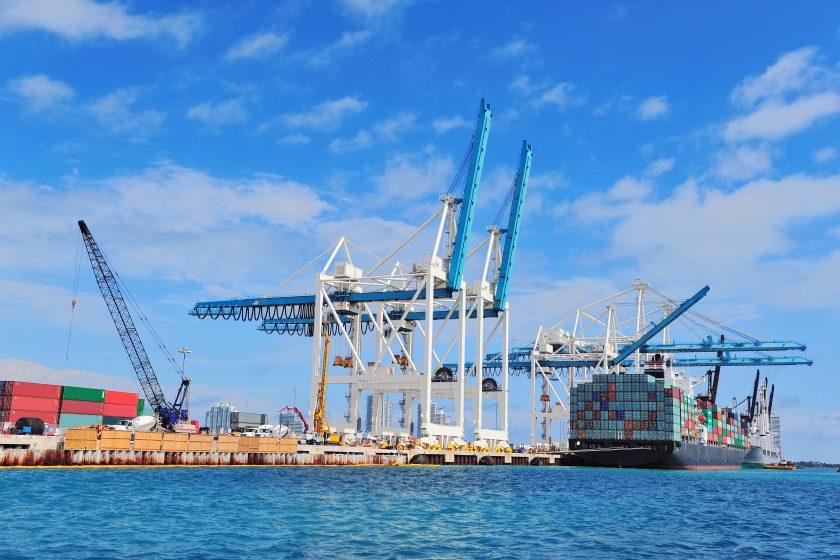LOGISTICS
In the summer of 2023, the world witnessed a significant disruption in the realm of global trade—the Panama Canal congestion. This event, influenced by a complex interplay of factors including drought exacerbated by climate change, has cast a spotlight on the fragility of international supply chains. In this article, we delve into the multifaceted causes behind the 2023 Panama Canal congestion, focusing on the harsh drought’s impact, and examine the widespread implications for global trade.
SBB Shipping USA Inc. – Consider it shipped!™
The Puzzle of the 2023 Panama Canal Congestion
During the heat of August 2023, a perfect storm of elements converged to create the Panama Canal congestion—a complex puzzle with interlocking pieces:- Mega Vessels and Cargo Surge: The era of mega-container ships, designed to transport massive quantities of goods, collided with a surge in global demand. This sudden increase in cargo overwhelmed the Canal’s capacity, stretching its limits.
- Lingering Pandemic Ripples: The reverberations of the COVID-19 pandemic disrupted supply chains, creating imbalances between supply and demand. As economies reopened at different rates, an influx of goods strained the Canal’s infrastructure.
- Geopolitical Ripples: Geopolitical tensions redirected some ships to alternative routes, increasing traffic through the Panama Canal and exacerbating congestion.
- Nature’s Wrath: Drought Amidst Climate Change: Unpredictable weather patterns intensified by climate change led to harsh drought conditions. Reduced water levels in the Canal’s channels and locks impeded navigation, further contributing to the congestion.
- Climate Change’s Long-Term Implications: The Canal’s vulnerability to climate change was laid bare. Rising temperatures and erratic weather patterns pose a persistent risk of future disruptions, complicating global trade flows.
Global Trade on the Precipice
The August 2023 Panama Canal congestion reverberated across the global trade landscape, casting a shadow on the intricate web of international commerce:- Trade Paralysis and Delays: The immediate consequence was trade disruption. Manufacturers and retailers accustomed to seamless logistics faced delays, resulting in production slowdowns and product shortages.
- Escalating Costs and Inflation: Vessels stranded in the congestion led to elevated operational costs for shipping companies. These costs were eventually passed on to consumers, contributing to inflationary pressures.
- Navigational Route Dilemmas: To avoid Canal congestion, shipping companies began exploring alternative routes, which come with their own set of challenges, such as longer transit times and increased fuel consumption.
- Vulnerability of Emerging Economies: Nations heavily reliant on the Panama Canal suffered disproportionately, as their economies were exposed to external shocks. The congestion highlighted the necessity of diversifying trade routes.
- Climate Change’s Role in Trade Disruption: The 2023 congestion was a stark reminder of climate change’s intricate connection to trade disruptions. Rising temperatures, extreme weather events, and water shortages could reshape global trade dynamics.
Mitigation and Preparing for the Future
In response to the August 2023 Panama Canal congestion, stakeholders are proactively addressing the immediate challenges while laying the groundwork for a more resilient trade ecosystem:- Infrastructure Reinforcement: Investments in expanding the Canal’s infrastructure are underway, aiming to accommodate larger vessels and mitigate future congestion risks.
- Technological Innovations: Advanced technology, including AI-driven traffic management systems, are being harnessed to optimize vessel flow, minimize congestion, and enhance navigational efficiency.
- Diversified Navigation Strategies: Shipping companies are reevaluating their route strategies, emphasizing diversification to reduce dependence on any one route.
- Adaptive Supply Chains: Businesses are embracing adaptable supply chain models, integrating digital solutions, and implementing robust risk management strategies to navigate potential disruptions.
Conclusion
The August 2023 Panama Canal congestion serves as a poignant reminder of the delicate balance of global trade and its vulnerability to an array of intricate factors, including climate change-induced drought. As the world grapples with the aftermath of this pivotal event, it is simultaneously presented with a unique opportunity for innovation and adaptation. The lessons derived from this congestion will drive stakeholders to craft a trade landscape that is not only agile and resilient but also attuned to the challenges posed by a changing climate and evolving global dynamics.SBB Shipping USA Inc. – Consider it shipped!™
Related Posts
LOGISTICS
August 11, 2023 By sbbshippingusainc
Demurrage vs. Detention in Maritime
In the complex world of maritime shipping, various terminologies often confuse even the...
LOGISTICS
May 5, 2023 By sbbshippingusainc
The 7 R’s of Logistics with SBB Shipping
What Are the 7 R’s of Logistics?
The 7 R’s (Rights) of logistics refer to the key...




